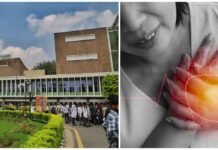The requirement of food is different in different phases of life and also its metabolism. If this is disturbed then naturally the whole body functions are disturbed and we suffer from many diseases. Quantity, quality and the type of food consumed should be according to the age, to remain healthy, fit and fine.
Phase 1: From birth to youth 25 years
This phase is called the growing phase, during this period, the requirement of food is for two reasons, the first reason is for growth or a proper formation of body parts and secondly if any wear and tear of the body parts takes place like fracture in childhood, due to running, playing and doing other physical work.
Therefore the body needs appropriate food to repair the damage as well as for body formation hence, during this period more nutritious food is required and secondly as the life force has more capacity to digest food during this period, so, considering this also, the proper requirement of food is needed.
Phase 2: Grown-up youth, from 25 to 50 years
The phase is the developed state which starts after 25 years of age. Our body stops growing after this age, its formation or development is complete hence, no food is required for the formation of body parts. The requirement of food is only for repairing damages and removing waste. Hence, it is clear that there is less requirement of food in the developed period as compared to the developing period. During this period, those who continue eating food as they used to do in the previous period are prone to diseases and tiredness.
Phase 3: old age period, after the age of 25years
The third stage is old age after the age of 50 years, physical work is less, hence less physical damage takes place therefore for repairing the damages incurred in this period we need even fewer calories, hence, less requirement of food than in the developed period, secondly our life force also decreases in this period, thus, it cannot digest food in large quantities considering this, requirement of food needed is less in old age.

Natural salt
Natural salt contains traces of different elements, when a dietary deficiency is of these trace elements occur cells lose the ability to control their ions, it causes cells to burst leading to nervous disorder, brain damage and muscle spasm, breakdown of cells’ regeneration, process, and growth. 27% of the body’s natural salt is in the bones. Osteoporosis results when the body needs more natural salt and takes it from the bones.
Ordinary table salt contains additive elements such as aluminum silicate to keep it powdery and porous. Aluminum is a very toxic element for our nervous system. It is believed to be one of the primary causes of Alzheimer’s disease. Refined salt after different bleaching processes will no longer combine with human body fluids, which invariably cause severe problems of oedema (water retention) and several other health disturbances.
Unrefined sea salt is a better choice of salt than other types of salt found in the market.
The body gets sufficient natural Salt from raw vegetables and their juices.
Calcium level
The human body has an overall stock of 1200 to 1500 gm of calcium of which 99% is stored in the bones. A person needs about 1200 to 1500 mg calcium per day for neutralization of its own acids which are generated due to metabolism (anabolism and catabolism).
One cannot replenish this loss of calcium through capsules and tablets of calcium. For increasing reserves of calcium stock in the bones, teeth and body cells, calcium-rich food with proper digestion and vitamin D is required. It is important to keep a record on our calcium intake. 20 minutes of daily walking and regular exercise prevent bones from becoming weak.
Osteoblast– It is the process of formation of the bones. It deposits calcium in the bones and plugs the pores of the bones. This process continues throughout our life cycle.
Osteoclast– It is the process of removal of Calcium from the bones. It fights with natural acidity produced by various metabolic processes. This process exists in the body to strengthen our buffer system.
The human body generates a number of acids in the anabolic and catabolic processes namely carbonic, sulfuric, phosphoric, lactic and other organic acids. These acids require detoxification. It is the osteoclast process which helps in acid detoxification.
The body also uses calcium to find out acids introduced through unintended roots such as phosphoric acid of white sugar, hydrogenated ghee, soft drinks, and sherbets. So the teeth and bones become weak.
Detoxification of poisonous chemicals caused by smoking tobacco etc. also requires a lot of calcium. Thus addiction to smoking leads to osteoporosis.
Osteoclast process becomes accelerated due to consumption of unhealthy junk food and the extra pressure demands of the body for detoxification, results in the loss of balance or equilibrium of bone mass.
Steroids, cortisone, corticosteroids and artificial hormones also cause the same damages. The bone growth becomes uneven which is seen most often in these cases.
For asthmatic patients taking steroids treatments and heavy use their rib cage bones leads to depletion of calcium which starts from the bones of the cervical vertebrae leading to the concavity of the vertebral column called as a hump.
For arthritic patients, taking steroidal treatment leads to depletion of calcium throughout the body. Thus there are deformities throughout the skeletal bones. For runners taking steroids, depletion is often concentrated in the toe bone leading to toe bone deformity.
However for a person often suffering from cold and sinus the deformity is seen in the sinus bones. It is either abnormal convexity or concavity of bone Matrix due to steroids or cortisones treatment.
Ionic calcium is necessary for an amazing number of processes in the body namely; transmission of nerve impulses, muscle contraction, blood coagulation, secretion of glands, cell division, etc. If depletion of ionized reserves of calcium is excessively fast it leads to osteoporosis and many other diseases related to calcium deficiency. However, the spongy bones of the spine are most vulnerable to the process of throwing out of calcium and hence, there is a high rate of diseases like spondylosis, spondylomalacia, lumbar pain, pain in the groin area and backache. It further leads to bone deformities of the backbone and knees.
More osteoclast processes may further lead to discharges, malnutrition, inflammation, blockages, swellings, irritation, ulcers, obesity, fragility of the bones, physical disability, memory loss, epilepsy, paralysis, skin diseases, and other chronic diseases, etc.
“Right Eating Leads to Right Lifestyle”

























